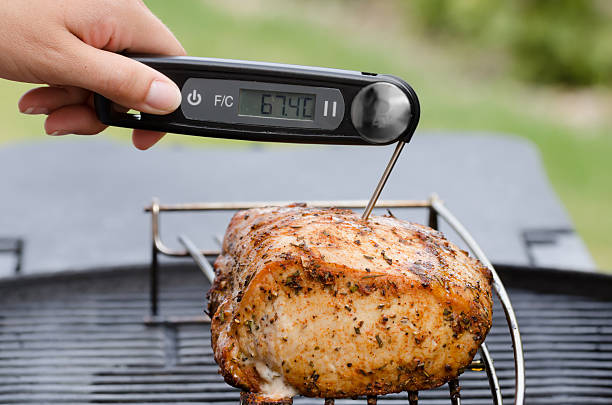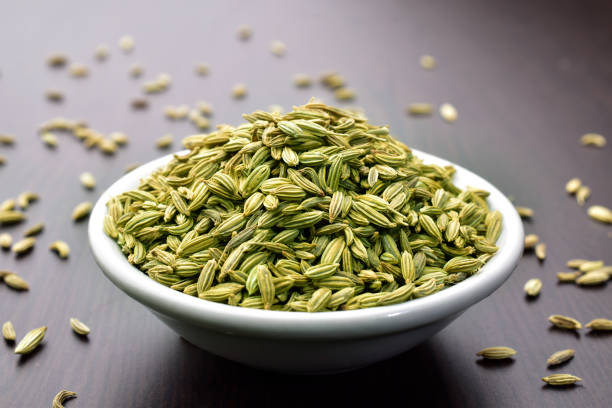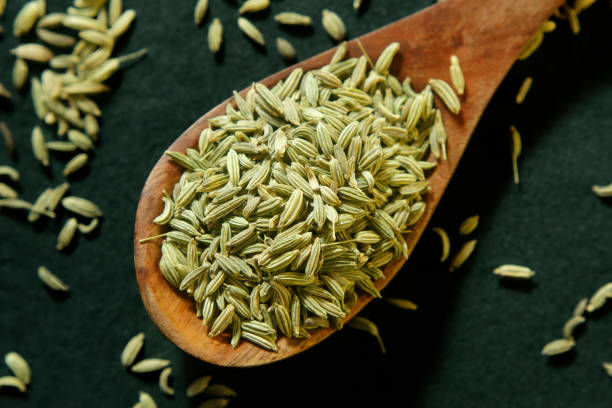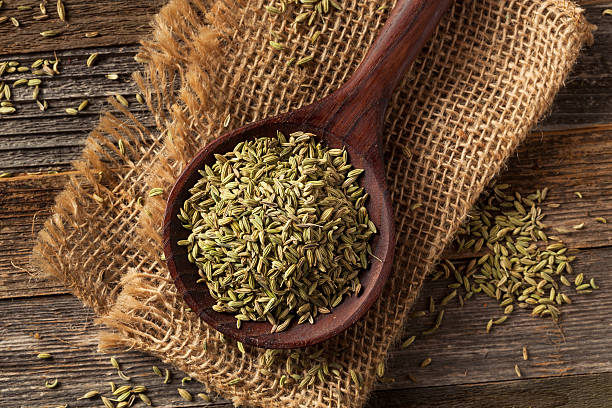Health
Pork Internal Temp Guide: How to Cook Pork Perfectly Every Time

Introduction
There is nothing better than a pork sizzling smell on a Sunday afternoon. I recall the smell of my grandma cooking her popular roast made of pork in her kitchen. We used to sit and wait to cut into that juicy meat and tender bit.
But the trick that she taught me is this: the pork internal temperature is important. It is not difficult to cook perfect pork. With this guide, you will get it right on every turn.
It is time to jump into the Big World of Pork, pork chops, pork roasts, and see how to make every meal memorable.
The Reasons Pork Internal Temp Matters

Pork is a tricky thing. Cook it too much and it is unsafe. Cook it too much, it will be as dry as a bone. Your roadmap to success is pork internal temp. It makes your meat safe to consume and delicious.
The USDA provides clear instructions of safe temperatures for pork. They would help you to steer clear of foodborne illness when followed. And you will seal in those tasty juices also. And now, what are the magic numbers?
Safe Pork Internal Temperature Chart
This is a basic chart of pork internal temp. Keep it at hand!
- Ground pork: 160 F (71 C)
- Pork Chops, Roasts and Tenderloin 145 F (63 C) rest 3 minutes
- Shoulder: Pork Ribs, 190 to 205.F (88 to 96 °C), fall-apart tenderness
These temps are your backup. To be precise, use a meat thermometer. No estimations are required!
Tips You Require
The best companion is a good meat thermometer. I got to know this through experience. I used to believe that I could estimate a pork chop. It was hard as hide. I now apply an electronic thermometer. It takes a short time and is exact. A cutting board, a knife, and your favorite pork cut will also be needed. Straightforward tools can do wonders.
Perfect Pork Chops Cooking
Pork chops are a midweek time-saver. They are fast and agile. However, it is important to nail the pork internal temperature. Ideal target temp should be 145 o F (63 o C). Cook them and allow them to a rest of 3 minutes. This makes them moist.
I pan-fried chops to my children last week. They had been made of gold on the outside and tender on the inside. The secret? I even checked the temp and was not in a hurry. Give it a flavor twist by using a garlic-herb rub.
How to Cook Pork Tenderloin
Pork tenderloin is lean and tender. Cook it too long and it tastes like cardboard. The internal temp of pork tenderloin is 145degF(63degC). I am fond of roasting it in a honey-mustard bath. There was an occasion when I invited my friends.
Imagine how they raved about the tenderness of the tenderloin being edible, which is so soft and melts in your mouth. I beamed and thanked my thermometer, which came to the rescue. It should rest for 3 minutes to seal the juices.
Pork shoulder Bliss Slow-Cooked

The pork shoulder is ideal when you want pulled pork. It requires a more pork internal temp i.e. 190-205°F (88-96 O C). This causes it to be fall-apart delicate.
One summer this year I barbecued a shoulder, slowly. It shredded a dream after 8 hours. My visitors were not able to quit! The move should be low and slow. For the best results use a slow cooker or oven.
Burgers and Meatballs-Ground Pork
Ground pork is great as meatballs and as burgers. However, it is unlike the whole cuts. Ground pork has a pork internal temp of 160 0 F (71 0 C ).
No resting time required. Once I prepared pork meatballs to have a dinner with my family. They were meaty with flavor. I resorted to a thermometer to prevent overcooking. Italian herbs are good to season to taste to please a crowd.
Tricks to ascertain Pork Internal Temp
It is simple to check the pork internal temperature with the following tips:
- Apply a digital method: It is quick and precise.
- Put into the thickest part: No bones or fat.
- Wipe it down: Things should be healthy and wholesome.
- Test in several places: Particularly so with large roasts.
My thermometer is kept in the kitchen drawer. It has rescued numerous meals!
Mistakes to be Careful about
Who has not once spoiled a pork dish? The following are some of the pitfalls to avoid:
- Omitting the thermometer: You can not guess the thermometer.
- Not resting the meat: Resting keeps juices in.
- Overcooking: Most meat cuts benefit better when cooked slowly and without being too hot.
I used to hurry the pork roast. It was hard and rough. The moral of the story: patience and correct pork internal temp is all.
The Secret to Juicy Pork Resting
Sleeping Pork is A Game Changer. When it comes to chops and tenderloin, they take 3 minutes at 145°F (63 o C). This seals moisture. I would have sliced the pork immediately. Juices flowed about! Then I wait. It is worth it when that tender and juicy bite happens. Believe me, you will not regret it in your taste buds.
Seasonings of Pork
Pork adores strong taste. Try these:
- Marinades: Soy sauce, garlic, and honey do miracles.
- Dry Rubs: Brown sugar, paprika, and cumin are used.
- Sauces: A little sweet kick could be a barbecue or an apple glaze.
Recently, I prepared pork chops last month but I marinated them overnight. The taste was space age. Test it and discover your combo.
Real-life Story: The Perfect Pork Roast
On our last Christmas, I had an aim of impressing my in-laws. My individual selection was roasted pork. I was nervous and I followed the pork internal temp guide-145F (63C) with the rest.
I flavoured it with garlic and rosemary. The meat was juicy, pinkish, and ideal when I cut it. I got seconds, requested by my mother-in-law! That turn of events converted me into a believer in pork-cooking. You are able to do the same.
Are Pink Pork safe?

Yes, you can eat pink pork when the internal temperature of the pork is correct. According to the USDA, the temperature is acceptable at 145″). (F) (63″) C in the case of whole cuts. Ground pork requires 160°F (71 o C). The old rules were well done pork.
Not anymore. The use of modern farming increases pork safety. It is better to embrace that slight pink in order to have the best flavor.
The Processes and the Effects of Cooking
Various procedures have various influences on pork internal temp:
- Grilling: Rush and Inferno smoky. Often check the temp.
- Roasting: Roasting in an oven. Meat probe.
- Slow Cooking: Shoulder: Great. Target 190-205F (88-96 C).
Chops are my favorite meat to grill during summer. You can not beat smoky char. Choose one of the approaches that suits your vibe.
Combining Pork with accompaniments
Pork sparkles with the appropriate sides. Try these:
- Potatoes: Mashed- they are very creamy and warm.
- Roasted Veggies: Add carrots or Brussels sprouts to color it green.
- Applesauce: An old-fashioned sweet element.
Finally, in my last pork meal, I matched chops with roasted sweet potatoes. My family liked the combo.
Reheating and Storing Pork
Pork that has been cooked can last up to 3-4 days in the fridge. You can keep it frozen in freezer up to 6 months. It should be safety reheated to 165 F (74 C).
I will freeze pulled pork in quantities. It is ideal to make fast tacos. To make sure pork stays safe, retest the pork’s internal temp when reheating.
Conclusion
It is not as tricky as you might imagine cooking pork to a perfect result. Your guide to safe and delicious meals is the pork internal temperature.
A thermometer is your secret weapon, whether you are dealing with chops, tenderloin or pulled pork. Imagine a family dinner, smiles, a full plate.
Now, you are a person who can make such moments. Get your thermometer, choose your cut, and grill with confidence. So what will your next pork dish be?
Health
Signs Your Body Is Lacking Vitamins: Understanding the Hidden Messages Your Body Sends

Vitamins are essential nutrients that play a vital role in keeping our bodies functioning smoothly. From supporting immunity to improving energy, maintaining healthy skin, and keeping our organs working properly — vitamins are at the heart of our overall well-being. But despite their importance, many people don’t realize they’re deficient until symptoms start to appear.
Vitamin deficiency can happen due to an unbalanced diet, digestive issues, stress, lifestyle habits, or certain medical conditions. Thankfully, your body gives you warning signs long before the problem becomes severe. Understanding these signs can help you take action early and protect your long-term health.
Below are some of the most common signs your body is lacking vitamins, along with how they relate to your nutritional needs.
1. Constant Fatigue and Low Energy Levels
Feeling tired all the time—even after sleeping well—can be a major sign of vitamin deficiency. The most common vitamins connected to low energy are:
- Vitamin B12
- Vitamin D
- Iron (not a vitamin, but linked to deficiency-related fatigue)
Vitamin B12 helps produce red blood cells and supports the nervous system. When levels drop, the body cannot carry enough oxygen through the blood, leaving you feeling exhausted. Low Vitamin D, especially during winter months, also contributes to chronic fatigue because it affects mood and muscle function.
2. Hair Loss and Weak Nails
If you’re noticing more hair falling out during brushing or showering, your body may be lacking:
- Biotin (Vitamin B7)
- Vitamin B12
- Vitamin D
- Zinc
Biotin is essential for hair strength and growth, while Vitamin D helps create new hair follicles. Some people also experience brittle nails or slow nail growth when these nutrients are low.
3. Dry Skin, Acne, and Premature Aging
Your skin is often the first place to show nutrient deficiencies. Vitamins responsible for skin health include:
- Vitamin A
- Vitamin C
- Vitamin E
- Omega-3 fatty acids (not a vitamin, but essential)
Dry, flaky skin, persistent acne, and fine lines may signal that your body isn’t getting enough nutrients to repair tissue and fight inflammation. Vitamin C also helps produce collagen — the protein that keeps skin firm and youthful.
4. Frequent Illness or Weak Immunity
If you catch colds easily or recover slowly, your immune system may be struggling due to low levels of:
- Vitamin C
- Vitamin D
- Vitamin B6
Vitamin C strengthens immune cells, while Vitamin D activates immune defenses. Low levels make your body more vulnerable to viruses and infections. If you’re frequently sick, your body could be signaling that it needs an immune-boosting nutrient reset.
5. Muscle Cramps and Weakness
Muscle pain, cramps, twitching, or weakness are often linked to deficiencies in:
- Magnesium
- Vitamin D
- Calcium
- Potassium
These nutrients work together to regulate muscle function. When one or more is low, you may experience sharp leg cramps, nighttime muscle spasms, or difficulty lifting heavy objects. These symptoms are especially common in people who sweat a lot, exercise intensely, or drink insufficient water.
6. Vision Problems, Especially at Night
Difficulty seeing clearly at night or dry, itchy eyes can signal a lack of Vitamin A.
This essential vitamin maintains eye moisture and supports the cornea. Severe deficiency may lead to night blindness and other eye disorders. If your eyes feel tired or strained often, it may be time to evaluate your vitamin intake.
7. Mood Swings, Anxiety, or Depression
Your mental health is deeply connected to your nutrition. Certain vitamins help regulate brain chemicals such as serotonin and dopamine. Deficiencies in the following vitamins can affect mood:
- Vitamin D
- Vitamin B12
- Vitamin B6
- Folate (Vitamin B9)
Low Vitamin D levels are strongly associated with seasonal depression, while B-vitamins help keep the nervous system stable. If you’re experiencing unusual mood swings or increased anxiety, a vitamin deficiency might be part of the issue.
8. Slow Wound Healing
If cuts or bruises take longer to heal than usual, you may be low in:
- Vitamin C
- Vitamin K
- Zinc
Vitamin C is essential for collagen production, which repairs skin tissue. Vitamin K helps your blood clot properly after injury. Slow healing is one of the clearest signs your diet may be lacking essential nutrients.
9. Tingling or Numbness in Hands and Feet
A “pins and needles” sensation often points to deficiencies in:
- Vitamin B12
- Vitamin B6
- Vitamin B1 (Thiamine)
These B vitamins support nerve health. Without them, nerves may become damaged, causing numbness, tingling, or burning sensations in the limbs. This symptom is particularly common in people with digestive issues or a vegan diet lacking supplements.
10. Cracked Lips or Mouth Ulcers
Painful cracks at the corners of your mouth or frequent mouth sores can be caused by low levels of:
- Vitamin B2 (Riboflavin)
- Vitamin B3 (Niacin)
- Vitamin B12
- Iron
Your lips and mouth heal quickly, making them sensitive to nutrient changes. Persistent sores are a clear signal that your body is missing key vitamins.
11. Pale or Yellowing Skin
Skin color changes often indicate:
- Vitamin B12 deficiency
- Iron deficiency
- Low folate levels
When your body lacks these nutrients, it struggles to produce red blood cells, leading to pale or yellowish skin (a condition called jaundice in severe cases). Fatigue and shortness of breath may accompany these symptoms.
How to Correct Vitamin Deficiencies
If you suspect vitamin deficiency, here are safe steps to improve your levels:
✔ 1. Improve Your Diet
Include more whole foods such as:
- Leafy greens
- Eggs
- Fish
- Fruits
- Nuts and seeds
- Whole grains
- Lean meats
✔ 2. Spend More Time in Sunlight
Just 15–20 minutes of sunlight helps boost Vitamin D naturally.
✔ 3. Consider Supplements
If dietary changes aren’t enough, supplements may help. However, always consult a healthcare provider before starting any supplement plan.
✔ 4. Get Blood Tests
A simple blood test can show which vitamins you’re lacking. This is the most accurate method.
✔ 5. Stay Hydrated
Water helps your body absorb vitamins and transport them effectively.
Final Thoughts
Your body is always communicating with you — through your skin, energy levels, mood, and even hair. The signs your body is lacking vitamins often start small, but if ignored, they can affect long-term health. By staying aware of these signals and making timely lifestyle changes, you can restore balance, improve immunity, and feel healthier overall.
Remember, good nutrition is not just about eating more — it’s about eating right. If you listen closely, your body will always tell you what it needs.
Health
Teething Rash in Babies: Causes, Remedies, and Prevention Tips

Introduction
When your child is about to get his or her first tooth, it is an interesting moment. To a lot of parents, however, it is accompanied by concern. On soft cheeks or chin, they see a red and bumpy rash caused by teething.
It is devastating when your small baby is not in a comfortable state. This article discusses the cause of teething rash, easy solutions to calm it, and suggestions to avoid the same. Let us make your baby smile as it is teething!
Teething Rash: What Is A Teething Rash?

A teething rash is a common skin problem of babies. It manifests in the form of red and rough patches, normally on the face, neck or chest. It occurs when babies drool a lot during teething.
The additional saliva rubs on their sensitive skin. An instance is when my friend, Sarah, realized that her 8-month-old baby, Emma, got a red chin after chewing on toys all day long. It does not harm them, but it makes the babies cranky.
Why does teething give a rash?
Drooling occurs in babies during teething. The gums are sore, and they eat everything. This slobber remains on their skin, and this irritates.
The enzymes contained in saliva possess the capability to destroy sensitive infant skin. Otherwise, it causes a condition known as teething rash. Emma drooled so that her chin turned red. It may be aggravated by cold or coarse fabrics.
Additional Reasons for Tooth Rash
Not always is that teething rash is due to drooling. The irritation can be added by food or milk adhering to the skin. Contributing factors could also be harsh soaps or wipes.
As an example, Sarah had applied scented wipes on Emma, and it aggravated the rash. A chapped skin by wind or dry air may also resemble a teething rash. When in doubt, make sure to see a doctor.
How To Recognize Teething Rash
A teething rash appears as little red bumps or chapped skin. It is normally on the cheeks, the chin, or on the neck. The skin may appear rough or even be warm. Contrary to eczema, it conditions are connected to drooling and teething.
In case the rash of the baby with the teething rash spreads or the rash contains pus, it may not be the teething rash. A brief assessment by the pediatrician will eliminate confusion.
Affect on Parents
The sight of a teething rash in your baby may be very overwhelming. You may also feel helpless and there may be questions like whether you are doing enough.
Sarah was crying because Emma could not get rid of her rash. Worry is common, but you are not the first one. When you have handy solutions, you can alleviate the symptoms in your baby and become a superhero parent once again.
Treatments to Calm a Tooth Rash
Fortunately, a teething rash can be readily treated by a tender touch. These are some of the effective solutions:
- Prevent the Skin to getting wet
Be careful of wiping drool by using a soft and clean cloth. To prevent irritation, Pat, not to rub. Sarah put a muslin cloth over Emma, and it did. Take wet bibs off frequently. There is less chance of a teething rash developing in dry skin.
- Use a Barrier cream
Use a baby-safe barrier cream (such as petroleum jelly or zinc oxide). These prevent the skin from saliva. Applying a very little amount of Vaseline on Emma’s chin, the red shifted within days. Opt to use fragrance-free products always.
- Proffer Teethers
Provide your infant BPA-free teethe toys. They keep gums occupied thereby reducing drooling. Emma adored to use her chilled teether and it made her gum feel better. You can make your baby safe by avoiding toys that can have small parts.
- Cleanse Gently
Clean the affected place with tepid water and soap that does not have any fragrance. Keep away hard wipes or soaps. Dry the skin later with pat. This prevents an increase in teething rash.
- Visit a Pediatrician
Ask a doctor in case the rash does not get better within several days. They can prescribe a low concentration of hydrocortisone cream. Adult creams should never be used without a doctor recommendation. Sarah visited the pediatrician, who she proved that it was nothing more than a teething rash.
Prevention Tips: Teething Rash

A teething rash is easier to prevent than you can imagine. This is how to maintain the smooth skin of your baby:
- Bibs Wisely
Place your infant’s bib (soft absorbent one). Replace it when wet. Cotton bibs did miracles with Emma. They slurp before it lies on the skin.
- Moisturize Regularly
Apply every day a baby moisturizer that does not contain fragrance. It enhances the skin barrier thus it is less likely to develop a teething rash. Use it on a dry and clean body of your baby.
- Avoid Irritants
Avoid using scented lotions or wipes or detergents. They may aggravate a teething mat. Use hypoallergenic products. Sarah changed to unscented wipes, and Emma’s skin thanked her.
- Have some Teethers available
Having a clean teether at the ready. It minimizes the amount of drooling and keeps your baby in good mood. Refrigerated (non-frozen) teething rings are an excellent idea when it comes to sore gums and the prevention of rashes.
How to be Concerned with a Tooth Rash

Teeth rashes improve within some days. However, move to a doctor when there is the spreading of the rash, oozing, or fever. It may be an infection or any other skin problem. Sarah was happy that when Emma had this strange rash; she consulted her pediatrician. You woad fuoud your parental instincts.
A Parents Voyage
Any parent does not want his/her baby to be uncomfortable. Teething rash can be so frustrating that you will be tempted to feel a failure, and not. The little actions, such as cleaning drool or a barrier cream, make a large difference. When the rash of Emma wore away, and her smile came again, Sarah was proud. You can do it, too!
Conclusion
A teething rash is one of the bumps in the parenting road. It develops due to the irritation of the skin of baby on drooling during teething. You can calm it down quickly with gentle care, such as ensuring one keeps the skin dry and applying safe creams.
It is easy to prevent it by wearing bibs, hydrating, and preventing irritants. A pediatrician will help you out whenever you are in doubt. Soon, the fussy moments will be over as you will hear your baby giggle with happiness. Love and learn, and you will beat the teething rash!
Health
Fennel Seeds for Digestion: Nature’s Remedy for a Healthier Gut

Introduction
Fennel seeds are mini golf balls of power. They have been centuries-old stomach soothers. Consider a hot soothing homemade solution left by grannies. These small seeds are sweet and licorice tasting. They are the natural fix to flatulence and abdominal pain. Let us see what fennel seeds can do to change your gut health.
Why Fennel Seeds prove to be a good friend to the gut

Fennel is very nutritious. They have vital oils such as anethole. Such oils relax the digestive tract. They decrease bloating and soothe cramps. After a stomach dinner,, anyone who has a sensitive stomach, fennel seeds can be considered to be a bedside.
Gnawing fennel seeds is an age-old tradition after meals. They are also used as a dessert in most cultures after food. This is not a habit of having fresh breath only. It initiates digestion, and this aids your body in the processing of food.
A Real-Life Story
Sarah is 32 years old and is a teacher; she has problems with bloating. She had a painful feeling after heavy meals. This affected her confidence. Her aunt advised fennel seeds one day.
Sarah also doubted, but chewed one teaspoon after dinner. She became less bloated in a few days. She was lighter and more cheerful. Her new remedy consists of fennel seeds.
The Magic of Fennel Seeds
Fennel seeds smooth the muscles of the stomach. This aids in the expulsion of gas traps. They increase the production of enzymes, too. This softens food digestion. It was not a surprise that fennel seeds are a staple in herbal medicine!
And they are high in fiber. Fiber makes you have fefewert bacteria. It helps to avoid constipation and brings about normal bowel movements. The healthier your gut, the happier you are.
Simple Methods of Using Fennel Seed
It is easy to integrate fennel seeds. After the meals, chew out a teaspoon. It is fast and efficient. There is also a possibility of brewing the fennel tea. Simply soak a spoonful of seeds in boiling water for ten minutes. Drink slowly to get immediate relief.
Soups or salads should have crushed fennel seeds added to them. Their taste improves food and helps digest it. You can bake them even in bread. It is a delicious approach to look after your gut.
An Earth-Shattering Discovery by Mark

Spicy food was loved by Mark, a 45-year-old chef. But it gave me heartburn. He found fennel tea in the market in his area. A week later, he drank it up, and his heartburn ceased. Mark was revitalized. He has also introduced fennel seeds in his recipes. His customers adore the special taste and his stomach appreciates.
Science of Fennel Seeds
Research showss the advantages of fennel seeds. Studies indicate they interfere with levels of inflammation in the bowel. They also wrestle with dangerous bacteria. It maintains the balance of the digestive system. Fennel seeds are a natural antispasmodic. They help to stop abdominal cramps.
Most people are safe with them. It can be helpful to both kids and adults. First of all, pregnant women have to see a doctor. Never take big proportions as a first experiment to check the reaction of the body.
Fennel Seeds versus Over-the-Counter Remedies
What is the advantage of fennel seeds as compared to pills? They are natural and cheap. No severe chemicals. Most users show no side effects. As well, they are readily available in any grocery store. Some drugs are not gentle with thbodyb,, while fennel seeds are.
They are also delicious. It is better to have fennel tea rather than to take a pill. It is a little act that seems so mothering. You are nursing yourself back as nature used to do it.
Purchase and storage tips for Fennel seeds
Purchase fennel seeds in their entire form to have the freshest oness possible. Seek colorful green or brown seeds. The smell of those should be sweet and literally spicy. Do not use grey, lifeless seeds or seeds that have an odourless,as this indicates loss of potency.
Fennel seeds can be stored in an air-tight container. Store them in a dark, cool place. This retains their taste and advantages. They keep for a year when they are stored properly.
The family Trade
Maria was brought up to see her mom make a fennel tea. It is what their family used to settle games of upset stomach. In the adulthood, Maria continued the tradition. One taste of the fennel tea boosted her son out of tummy aches. This share of simple remedy united them.
Who can use Fennel seeds to his/her advantage?

Fennel seeds can be used by anybody that has problems with digestion. They assist in bloat gas and indigestion. They are ideal to those who consume heavy or spicy foods. Small quantities can be consumed even by children having sensitive stomachs.
Fennel seeds do not only need to be used when there is a problem. They lead to overall health of the gut. Having a good gut increases your mood and energy. It is just a small step but a big reward.
Conclusion
Nature presents fennel seeds. They are easy, cheap, and work. Not only does Sarah swear by them because of the relief of bloating,, but Mark swears by them to heal heartburn.
Fennel seeds are miraculous, whether you chew them, drink them as a te,a or put them in the food. They are soft and tough. Give a test run now and feel the difference in the gut. This is a natural cure that your body will appreciate.
-

 Health4 months ago
Health4 months agoTeething Rash in Babies: Causes, Remedies, and Prevention Tips
-

 Health4 months ago
Health4 months agoIs Burping a Lot a Sign of Cancer? Signs, Symptoms, and Risk Factors Uncovered
-

 Health4 months ago
Health4 months agoFennel Seeds for Digestion: Nature’s Remedy for a Healthier Gut
-

 Health4 months ago
Health4 months agoLemongrass Tea Every Day? Here’s What Happens to Your Body
-

 Health4 months ago
Health4 months agoHow to Get Unhigh Fast: Proven Ways to Sober Up Quickly
-

 Health4 months ago
Health4 months agoHow to Give a Hickey Fast: Quick Tips That Actually Work
-

 Health4 months ago
Health4 months agoShould Antibiotics Make You Tired? What Science and Doctors Say
-

 Health4 months ago
Health4 months agoWhat Does a Hemorrhoid Look Like: A Clear Guide for Home Diagnosis

